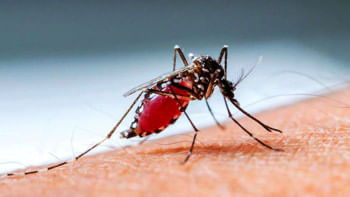Poetic forms engraved on wood
Rajaul Islam Lovelu, who has recently had his exhibition of wood carving at Zainul Gallery has done his MFA from the Institute of Fine Arts recently. He has studied Fine Arts earlier at Chittagong and Rajshahi before being admitted in the Crafts section.
He uses hand tools as well as machinery for his work. The colour is laid on with enamel using turpentine to reduce the glaze and enhance the matte effect. He went into wood carving because he felt confident in this and enjoyed it enormously. He feels that this is more of a challenge than straightforward painting. He admits that this requires time and patience but this suits his moods and inclinations best. There were 28 pieces and Lovelu had worked on them from 9:00 am to 6:00 pm at a stretch for a year in his own studio at Central Road.
Lovelu said that he got his inspiration from teachers in his department like Abdur Shakoor Shah, Farid Ahmed Mollah and Shatish Gujral (the brother of I K Gujral) from India. He had his earlier exhibition in 2001. There was a gap between the two exhibits as he had to study for his Masters and felt that if he had more time in hand he would be able to produce better work, with more depth and variation. He has mostly dealt with nature and wood is an integral part of that. With the trees, fish, flowers and birds he has brought in human beings too from time to time.
Talking about the problems that he faces, Lovelu says that there are very few ways to preserve the wood in the damp, muggy and hot weather. To buy and keep wood also requires an open studio where the sound of the work too would be absorbed so that it wouldn't disturb the neighbours. For this, he says, a tin shed is most suitable. Due to the difficulties artists often hesitate to come to this field, he points out, even though this is a traditional craft that goes back to centuries.
Asked to comment on the motifs that he has used, Lovelu says that they are definitely modern in conception and composition. "Yes," he says, "some of the flowers, owls and peacock have been seen in our art for centuries but the way I've rendered them is totally modern". Talking about the time it has taken him to complete each piece, Lovelu says "Each composition has taken me a week, working from early morning to sunset". Touching on his sale, he said, "I've sold about 16 items so far and covered the cost of production in Taka 1,75,000 that I got so far as I spent Taka 75,000 on the gallery rent and the printing of brochures. I'm confident that the rest will be sold in time too."
"Birds and elephant" which won a prize recently at the Bangladesh Shilpakala Academy in the Young Artists' Exhibition. It had an elephant at the bottom in a curled position with the trunk, tusks, legs and the tail all moulded into a curved shape. The ear too took this form of shape. On it were perched some birds with three layers of wood behind them like rows of trees with other canopies one being brown and the others reddish in hue. The bird was in an oval container heightened with red.
A woman's figure was included in "Nature-6". The female form had its head bent in a gentle curve to one side. Below her face, her long neck was draped and behind were animals that were curling over and had their tongues thrust out. A flower was included in the backdrop. This was completed in brown, blue, beige and white hues, while at places the wood was dotted and at others it had straight curves. Meanwhile the backdrop was a burnt black.
In "Owls-3" one found four rounded owls that had been curved with care and precision as they sat on a branch of a tree, with an antique touch to the presentation. The wings had been flecked while the tails were striped while the faces, eyes, beaks and wings were done in details, with some having their wings outstretched and all bearing shining brass bits for the protruding eyes.
A mother's shape had been brought in "Image" that was presented standing and carrying two children. Her clothes appeared to drape on either side with work done on them being presented in a deeper shape of red, flecked with black. Only the heads and hands of the infants were visible.
The piece de resistance was a carving in beige, brown and blue where two birds with long necks and beak turning upwards and downwards to flowers and blossoms were presented in an alcove in the forest. A woman's torso was included to the left.
In all his works Lovelu explored the links between nature and man with an oriental turn to his modern presentation. Invited by the motifs one was persuaded to ponder over the interior designs that had been created.

 For all latest news, follow The Daily Star's Google News channel.
For all latest news, follow The Daily Star's Google News channel. 



Comments